Documentation for the SYZYGY Brain-1, including a user manual, quick start guide, and links to the schematic and gerber files can be found through the Opal Kelly Documentation Portal.
Sales of SYZYGY products have moved to the Opal Kelly Web Store.
The Brain-1 is a launch platform for Opal Kelly’s SYZYGY open standard for high performance FPGA peripheral connectivity. SYZYGY fills the need for interconnectivity between Digilent™ Pmod and VITA 57.1 FMC that accommodates high performance peripherals. The Brain-1 is the first realization of a carrier board supporting SYZYGY.
We hope the Brain-1 is just the start of what will become a vibrant ecosystem of high performance, professional-grade peripherals for FPGAs. By making the Brain-1 and our first peripheral assortment open source, we intend to vigorously encourage additional contributions to the carrier and peripheral ecosystem by other manufacturers and engineers.
SYZYGY is intended for applications such as those listed below. The Brain-1 is intended as a general-purpose development platform enabling exploration and implementations in all of these areas:
Academics - Student engineers who need to integrate a system for experimentation or research. Their focus is on the system and not the carrier, so they would prefer to use an off-the-shelf carrier like the Brain-1. Their application may be a mix of off-the-shelf and custom-built peripherals.
Semiconductor Manufacturer - They have built a fancy new data acquisition device or MEMS sensor and want to get it into the hands of their customers for evaluation. SYZYGY is an awesome platform for evaluation deployment since the Brain-1 is low cost and open source, the SYZYGY standard is free to license, and peripherals are high performance and cost effective.
Professional Engineer - Professionals can accelerate the development of their system using off-the-shelf components, an off-the-shelf carrier (Brain-1), a standardized connector (SYZYGY), open source systems, and they can add custom peripherals to the system with relatively simple PCB design requirements (SYZYGY peripherals don’t require any complex PCB fabrication or assembly).
Serious FPGA Enthusiast, Hacker, High-end Hobbyist - Brain-1 is an excellent platform for the serious FPGA enthusiast. While a Zynq-based platform running Linux is nothing new, Brain-1 is the first approachable platform with an existing and expanding ecosystem of off-the-shelf high performance peripherals backed by an open standard which encourages proliferation and adoption.
Opal Kelly was founded in 2004. We have released dozens of Xilinx and Altera FPGA modules that primarily use USB or PCI Express to communicate between peripheral hardware and a host computer. Our products have ended up in professional grade test equipment, industrial machine vision cameras, Doppler radar installations, CT scanners, semiconductor evaluation boards, cutting edge scientific equipment, and all sorts of other things. Our customers use our products in one-off exeriments and multi-thousand unit deployments because we make their lives easier and allow them to focus on the science and engineering that makes their product unique.
SYZYGY is an open standard for connecting FPGAs to peripherals. It is the result of dozens of customer conversations, brainstorming sessions, peripheral analyses, and meticulous design. We’ll share more about the SYZYGY origin story in our updates.
In the meantime, you can learn more about SYZYGY and download the specification at SYZYGYfpga.io.
Opal Kelly has been producing high quality FPGA integration modules since 2004. While most of our customers assemble their systems by building custom hardware based on our modules, many of them would love to build prototypes and even full-scale integrated systems using off-the-shelf hardware. Our customers have worked with hundreds of high performance peripherals like ADCs, DACs, image sensors, audio CODECs, etc. Unfortunately, the lack of a unifying peripheral standard has been a hurdle to integrating these devices with off-the-shelf evaluation products.
Our interactions with thousands of these customers encouraged us to develop SYZYGY, an open standard for high performance FPGA peripheral connectivity. Existing standards were either inadequate (Digilent™ Pmod) for the performance requirements of desired peripherals or overly complex (VITA 57.1 FMC) for use in cost-effective systems. In other words, we found that our customers wanted something higher performance than Pmod, but smaller scale than FMC.
Adoption of the SYZYGY standard will allow us to offer products for our customers that can support a wide range of high performance peripherals without the expense of FMC or the duplication of effort present in custom solutions. This saves countless hours of engineering for all parties involved and reduces overall system cost, lowering the barrier to entry of these devices.
Furthermore, we hope this work encourages semiconductor manufacturers to adopt the SYZYGY standard for evaluation products as this would serve a two-fold benefit. First, it would bring some greatly appreciated consistency to the large quantity of evaluation boards available. Second, it would expand the usefulness of those evaluation products beyond mere evaluation - to full integration into prototypes and small quantity system production.
| Brain-1 | Trenz TE0715-04-12S | Pico-Zed 7015 | Snickerdoodle Black | Zybo Z7-20 | Zedboard | |
|---|---|---|---|---|---|---|
| FPGA | Zynq 7012S, 7015 optional | Zynq 7012S | Zynq 7015 | Zynq 7020 | Zynq 7020 | Zynq 7020 |
| Peripheral Standard | SYZYGY | Proprietary (FMC+Pmod with breakout board) | Proprietary (FMC+Pmod with breakout board) | Proprietary | Pmod | FMC+Pmod |
| Standard Expansion I/O | 3 x SYZYGY Standard Ports, 118 I/O, up to 12 Pmod ports | 132 I/O | 135 I/O | 125 I/O | 6 x Pmod Ports, 40 I/O | 5 x Pmod Ports + FMC LPC, 108 I/O |
| Transceiver Expansion I/O | 1 x SYZYGY Transceiver Port, 2 Lanes Rx/Tx | 4 Lanes Rx/Tx | 4 Lanes Rx/Tx | None | None | None |
| Gigabit Transceivers | 3.75 Gbps | 3.75 Gbps | 3.75 Gbps | None | None | None |
| Ethernet+USB | Yes | Requires Breakout | Requires Breakout | Requires Breakout | Yes | Yes |
| User I/O | 8 LEDs + 2 Pushbuttons | Requires Breakout | Requires Breakout | 5 LEDs + 2 Pushbuttons | 4 LEDs + 4 Pushbuttons + 4 Switches | 8 LEDs + 7 Pushbuttons + 8 Switches + OLED |
| RAM | 1 GiB DDR3 | 1 GiB DDR3 | 1 GiB DDR3 | 1 GiB LPDDR2 | 512 MiB DDR3 | 512 MiB DDR3 |
| Power Supply Input | 5-18V | 3.3V | 5-12V | 3.7-17V | 5V | 12V |
| Cost | $350 | $281.90 | $265 | $195 | $299 | $495 |
Brain-1’s adoption of the SYZYGY standard enables a modular approach to system design. Modules can connect to Brain-1 directly (with optional mounting hardware) or via high performance cabling. Power, ethernet, USB OTG, and USB serial console connectors are on-board, so there’s no need for additional attachments.
Our first round of SYZYGY peripherals has been in the lab for several weeks now. We made a few tweaks and adjustments and some of them had to go through a second revision prior to production. This round of peripherals will be part of the initial campaign. Additional peripherals are presently being designed and will be released after the campaign. We’d love to get your feedback to help channel our resources. Please email us at syzygy@opalkelly.com if you have any suggestions.
The following peripherals have already been designed, tested, and are either ready for production or are in the midst of adjustments for revision 2.
| Peripheral | Description |
|---|---|
| ADC-LTC2264 | 40 MSPS, 12-bit dual ADC based on the Linear Technologies LTC2264 |
| DAC-AD9116 | 125 MSPS, 12-bit dual DAC based on the Analog Devices AD9116 |
| CAMERA | 3.4 Mpixel color image sensor based on the ON Semiconductor AR0330 |
| PMOD4 | Expansion peripheral to 4x Digilent™ Pmods. |
| DUALSFP | Expansion peripheral to dual SFP+ cage for high-speed serial I/O |
Phase 2 peripherals are presently in design or planned. These will be announced and released during and after the campaign, but will not be part of the original campaign. Your feedback is welcome here! Since SYZYGY is an open standard, we also hope other manufacturers will contribute to build a vibrant ecosystem.
| Peripheral | Description |
|---|---|
| BREAKOUT | Breakout board exposing the SYZYGY pins to 0.1-inch spacing |
| SENSORS | WIP - GPS, gyro, accelerometer, pressure, humidity, temperature |
| MIC-ARRAY | Audio microphone array for use in beamforming projects |
| ROBOTICS | Robotics platform with motor and servo drivers |
| AVKIT | An audio-visual kit with HDMI output and stereo audio CODEC |
| ADC-GSPS | Ultra high-speed (GSPS) data acquisition using JESD204B |
One of our design goals when creating SYZYGY was to provide a cabling option. We knew that high performance was going to require an expensive cable but we thought we could limit costs by conserving on conductor count. Even a short FMC (VITA-57) cable can cost nearly $900. SYZYGY Standard cables are available for under $45 in low volumes and SYZYGY Transceiver cables are available for under $90. While these are certainly higher cost than the typical ribbon cable, there are some key things to consider. To be honest, we were pleasantly surprised with the pricing indicated in our first RFQ.
Electronic Engineering Journal
"The goals with SYZYGY were to provide broad peripheral support, with high speed single-ended as well as differential interface standards, to maintain FPGA pin economy by offering a moderate pin count for small, single-purpose peripherals..."
"SYZYGY is intended to fill the need for a compact, low cost, low pin-count, high-performance connectivity solution between FPGAs and single-purpose hardware peripherals."
"SYZYGY bridges the gap between Pmods and FMCs."
" In creating the SYZYGY open standard, Opal Kelly is shooting for a “Goldilocks” I/O standard that’s 'just right."
"SYZYGY bridges the gap between Digilent’s low-speed Pmod connector and the higher-end VITA 57.1 FMC (FPGA Mezzanine Card) standard." "
"Designed to coexist with existing interconnection standards including PMOD and FMC, Syzygy is claimed to be entirely vendor-agnostic and compatible with products from all major FPGA manufacturers including Xilinx, Intel, Lattice, and Microsemi. "
Electronic Engineering Journal
"[Opal Kelly President] Jake and I discuss the the details of Brain-1, why they chose crowdfunding to launch this project, and what their new SYZYGY interconnect standard is all about."
"It's the perfect middle option between the simple Digilent PMOD standard (low speed/low pin-count) and the very complex VITA 57.1 FMC standard (high speed/high pin-count)."
Produced by Opal Kelly in Portland, OR.
Sold and shipped by Crowd Supply.
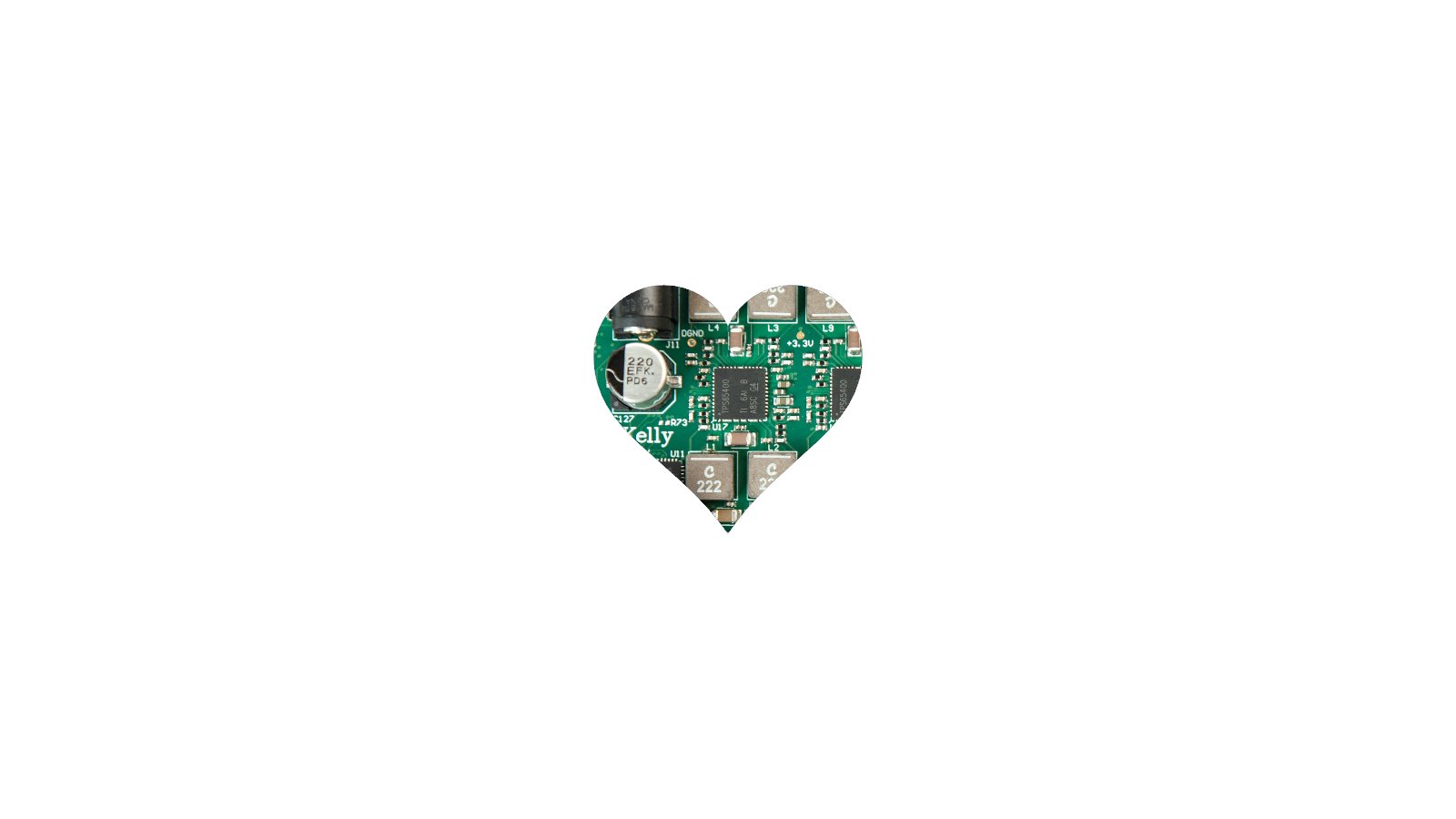
Support and stand behind SYZYGY. Help us encourage manufacturers and vendors to build hardware based on the standard!
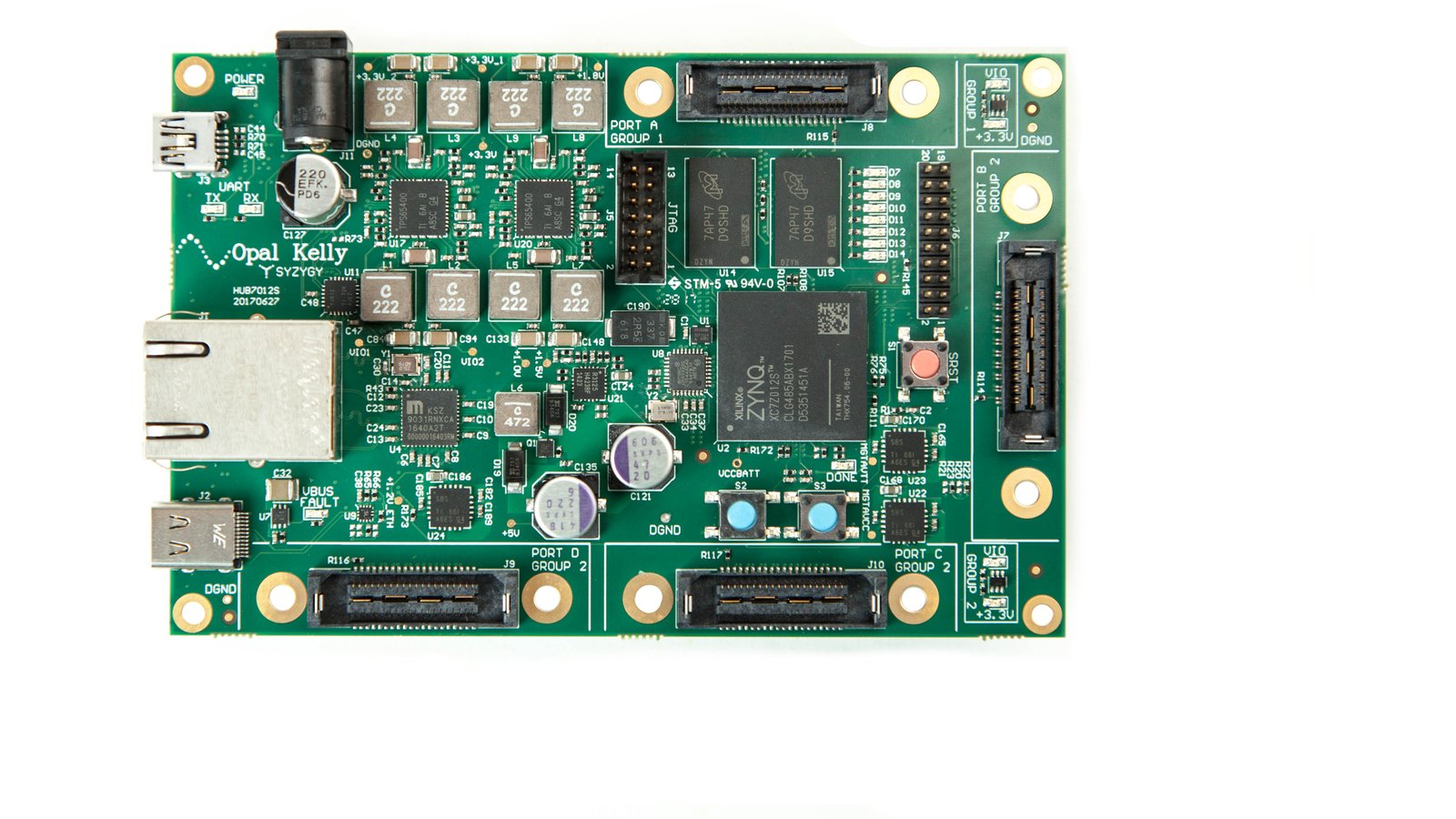
Your gateway to high-powered modular FPGA excitement! Thanks for your support! Includes the Brain-1, an 8 GB microSD card, and 12 V, 3 A power supply.
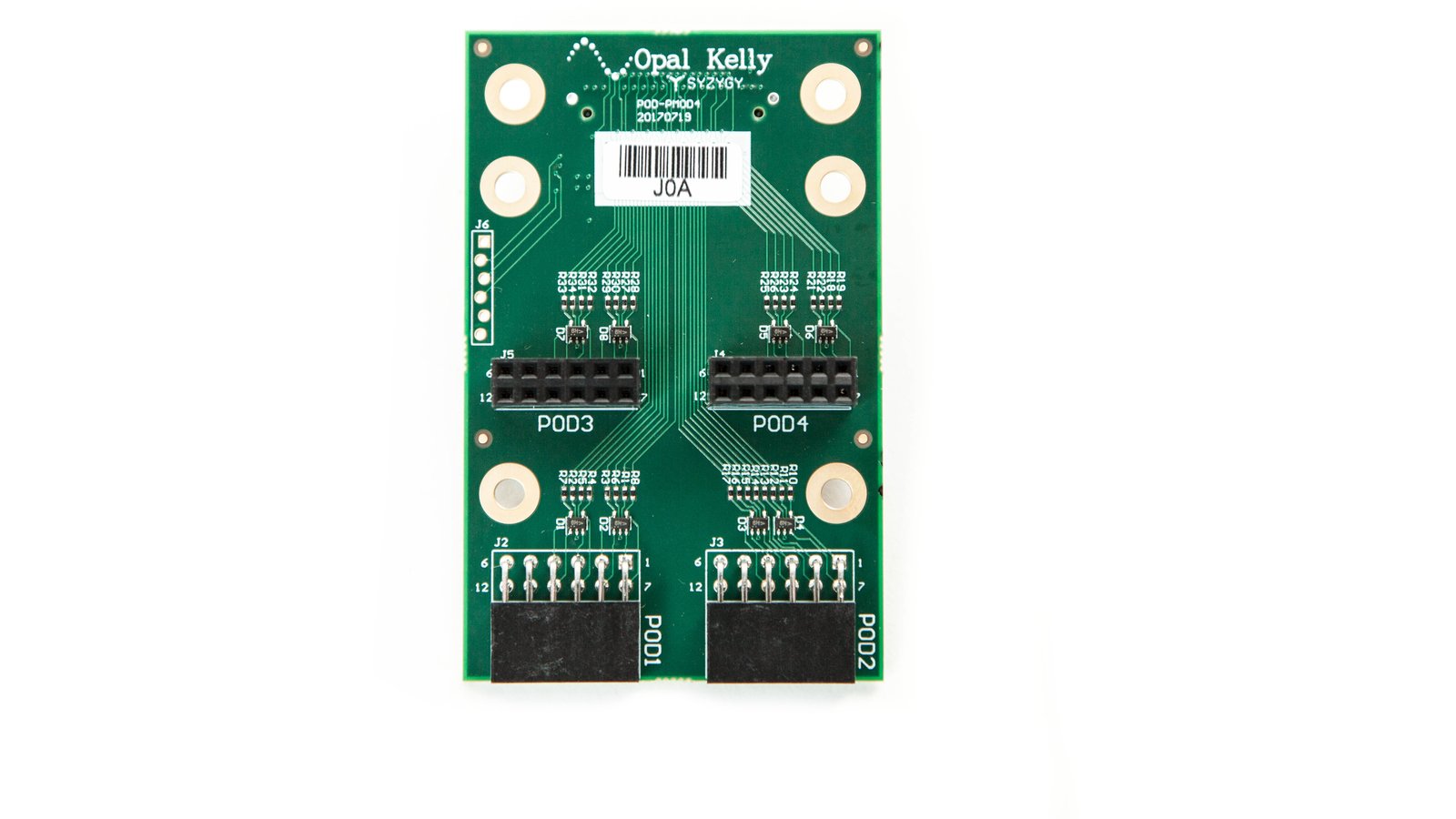
The POD-PMOD4 module allows you to attach up to four Digilent™ Pmod peripherals to a single SYZYGY Standard port, making dozens of existing Pmod peripherals available to your project!

POD-DAC-AD9116 is a 2-channel, 125 MSPS, 12-bit DAC (Analog Devices AD9116) as a SYZYGY Standard peripheral. The factory default output stage is transformer-isolated ac-coupled 50 Ω to SMA outputs but can be modified with some resistor swaps to an op-amp driver (ADA4857) for higher-impedance loads for lower-frequency reach.
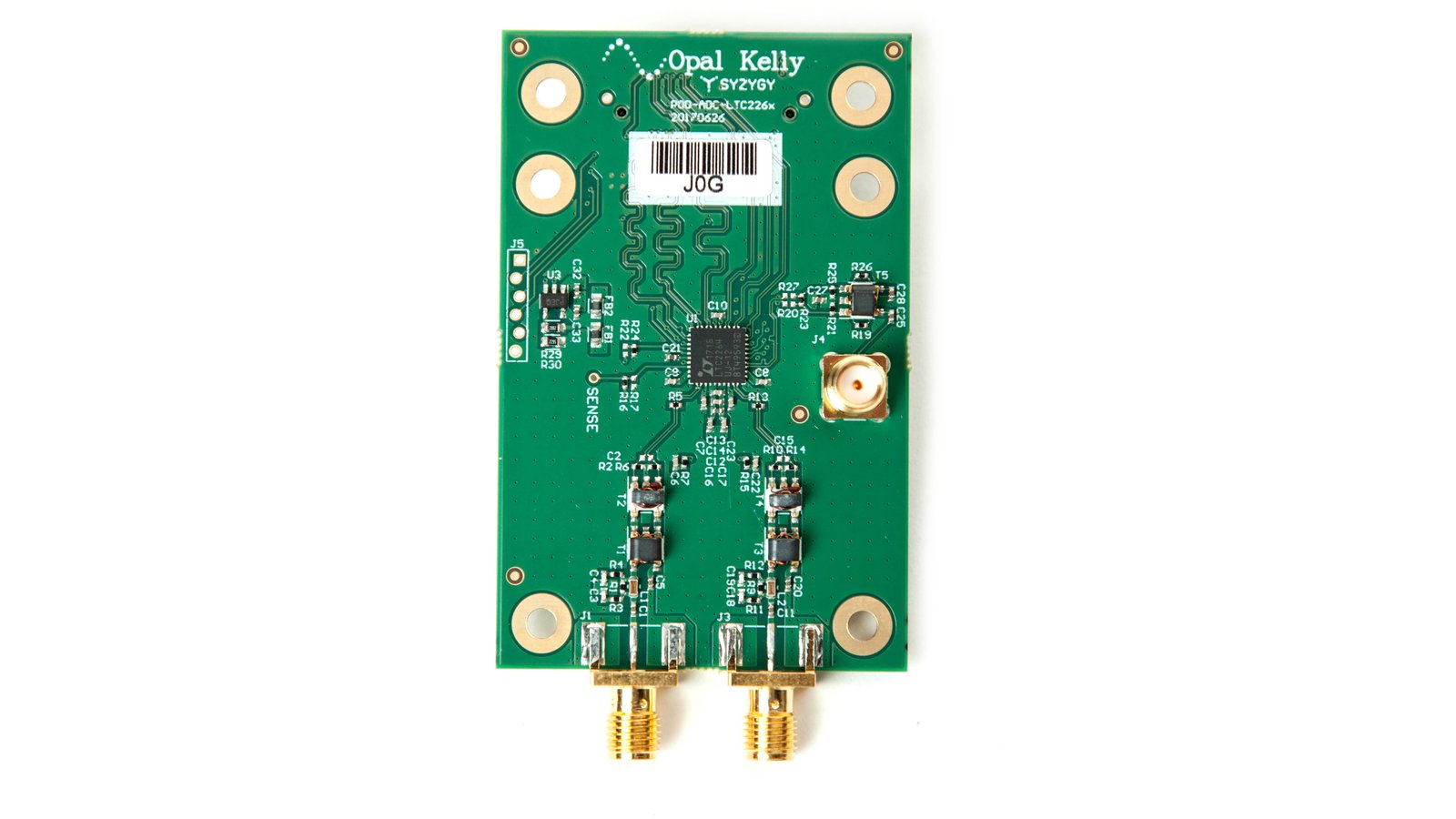
POD-ADC-LTC2264-12 provides dual 40 MSPS, 12-bit ADC (Linear Technology LTC2264-12) SYZYGY Standard peripheral with transformer-isolated 50 Ω SMA inputs.

POD-CAMERA has 3.4 megapixel 1/3 inch color CMOS image sensor (ON Semiconductor AR0330CM1C00SHAA0) that can capture full HD at 60 fps or reduced frame images at up to 215 fps over the HiSPI data interface. The camera comes with a plastic lens mount and high quality glass lens. This is a SYZYGY Standard peripheral.
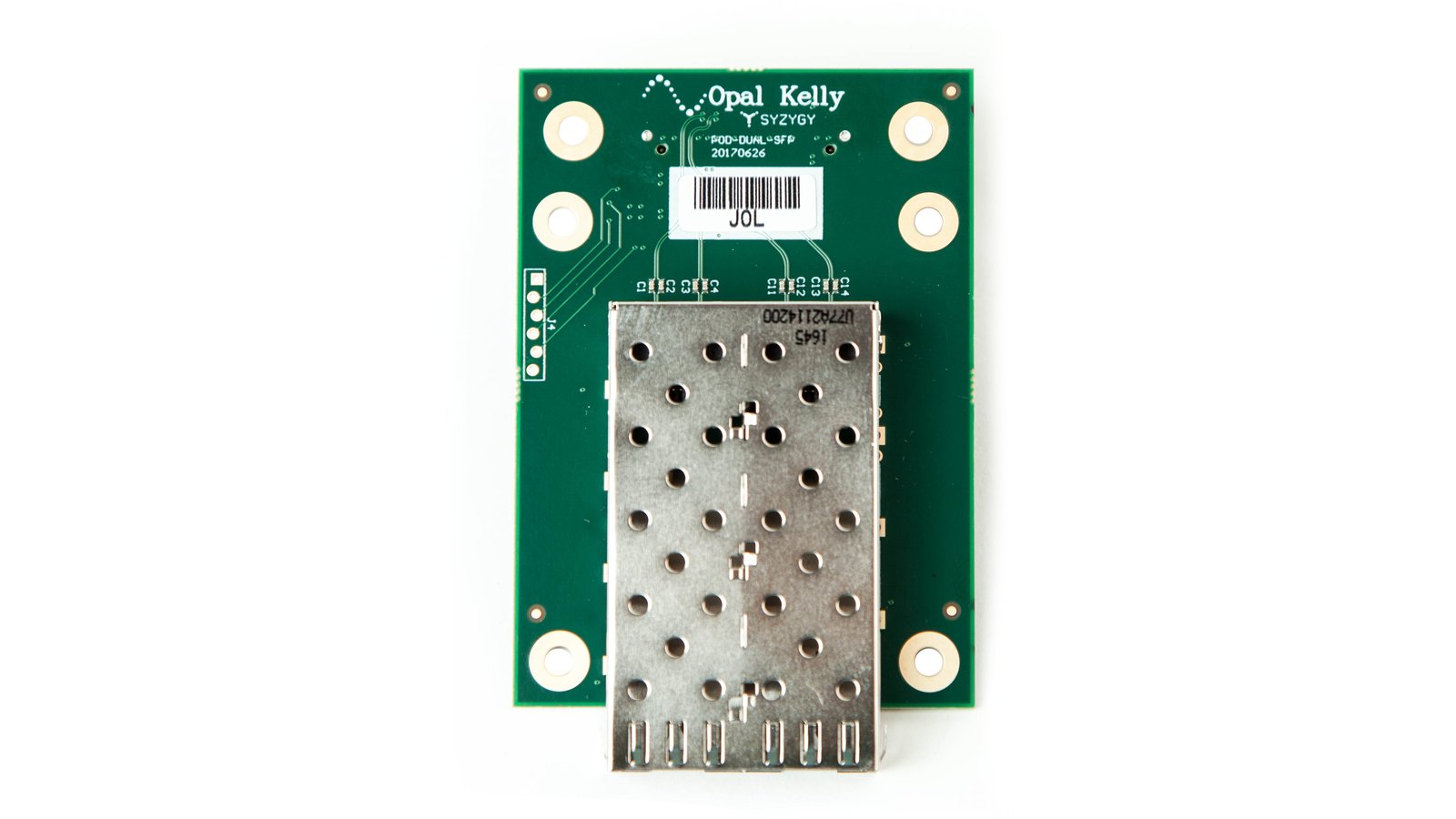
The POD-DUALSFP peripheral attaches to a SYZYGY Transceiver port and you can populate one or both cages with any module compatible with the Xilinx gigabit transceivers. Price does not include any transceiver modules. A fiber optic SFP module we have used successfully with Xilinx Aurora is the Finisar FTLF8524P2BNV which is available from Digi-Key, Mouser, Arrow, and Avnet.
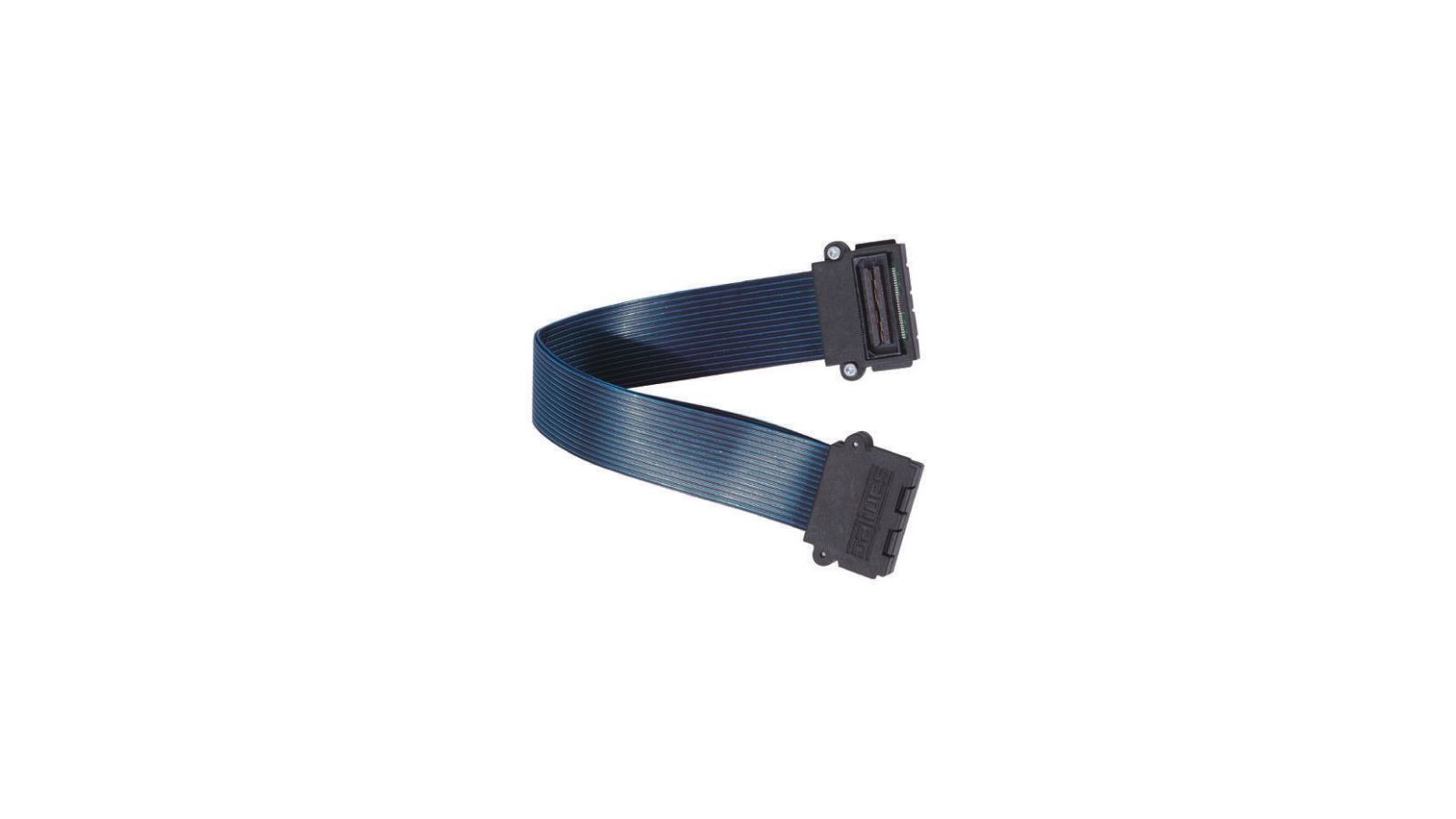
One CABLE-STD-6INCH 6 inch SYZYGY Standard cable to extend the reach of your peripheral to PODs or your own board. These are high quality Samtec cables that are also available direct from Samtec with part number: EQCD-020-6.00-TBL-STL-1-B
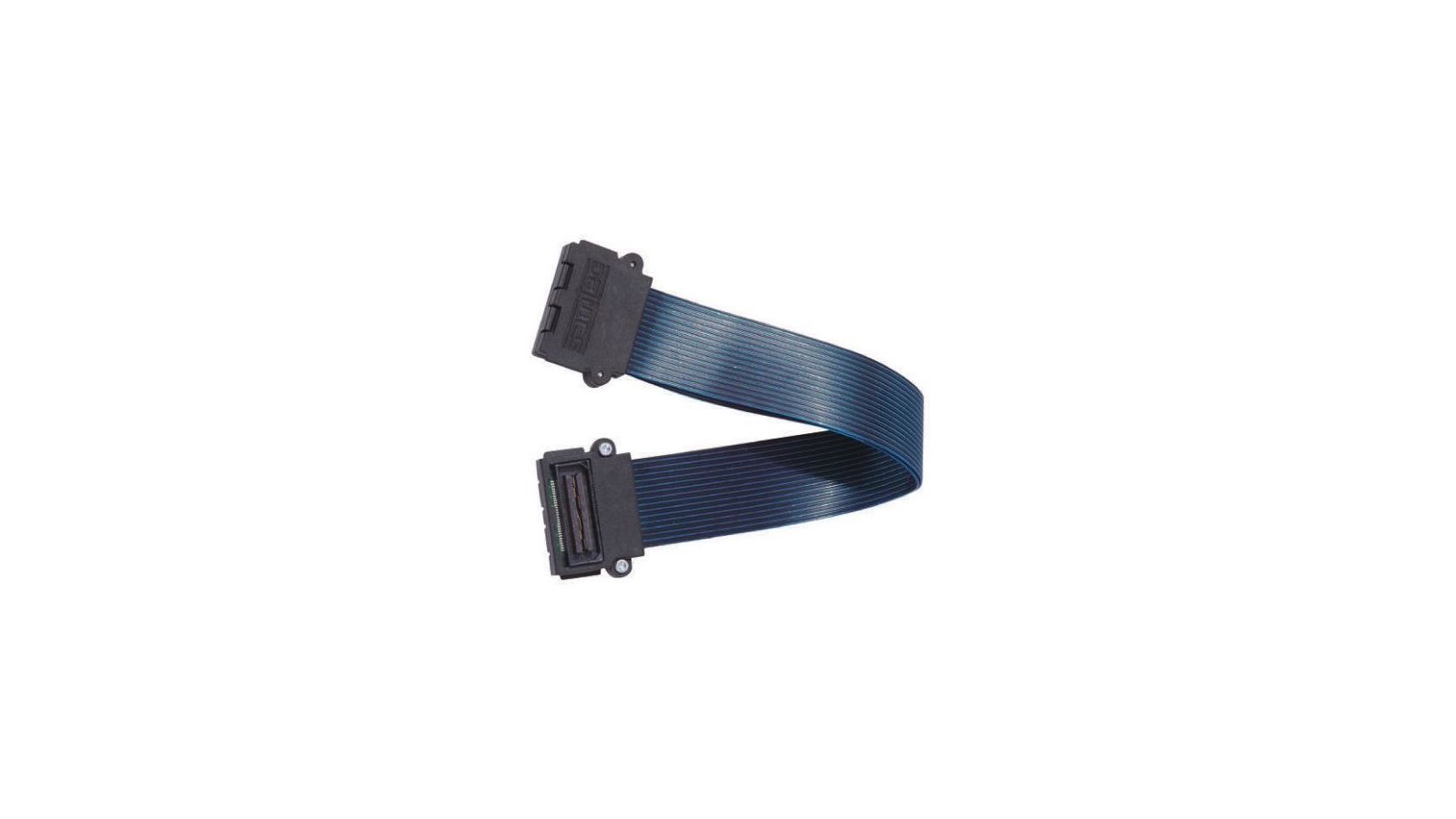
One CABLE-XCVR-6INCH 6 inch SYZYGY Transceiver cable to extend the reach of your peripheralto PODs or your own board. These are high quality Samtec cables that are also available direct from Samtec with part number: HQDP-020-6.00-TBL-STL-1-B

Founded in 2004, Opal Kelly offers a range of powerful, off-the-shelf, USB-based FPGA modules, including the easy-to-use Opal Kelly FrontPanel™ software interface and robust API. Opal Kelly products provide the essential device-to-computer interconnect for efficient and fast product prototyping, testing, development, and OEM integration.
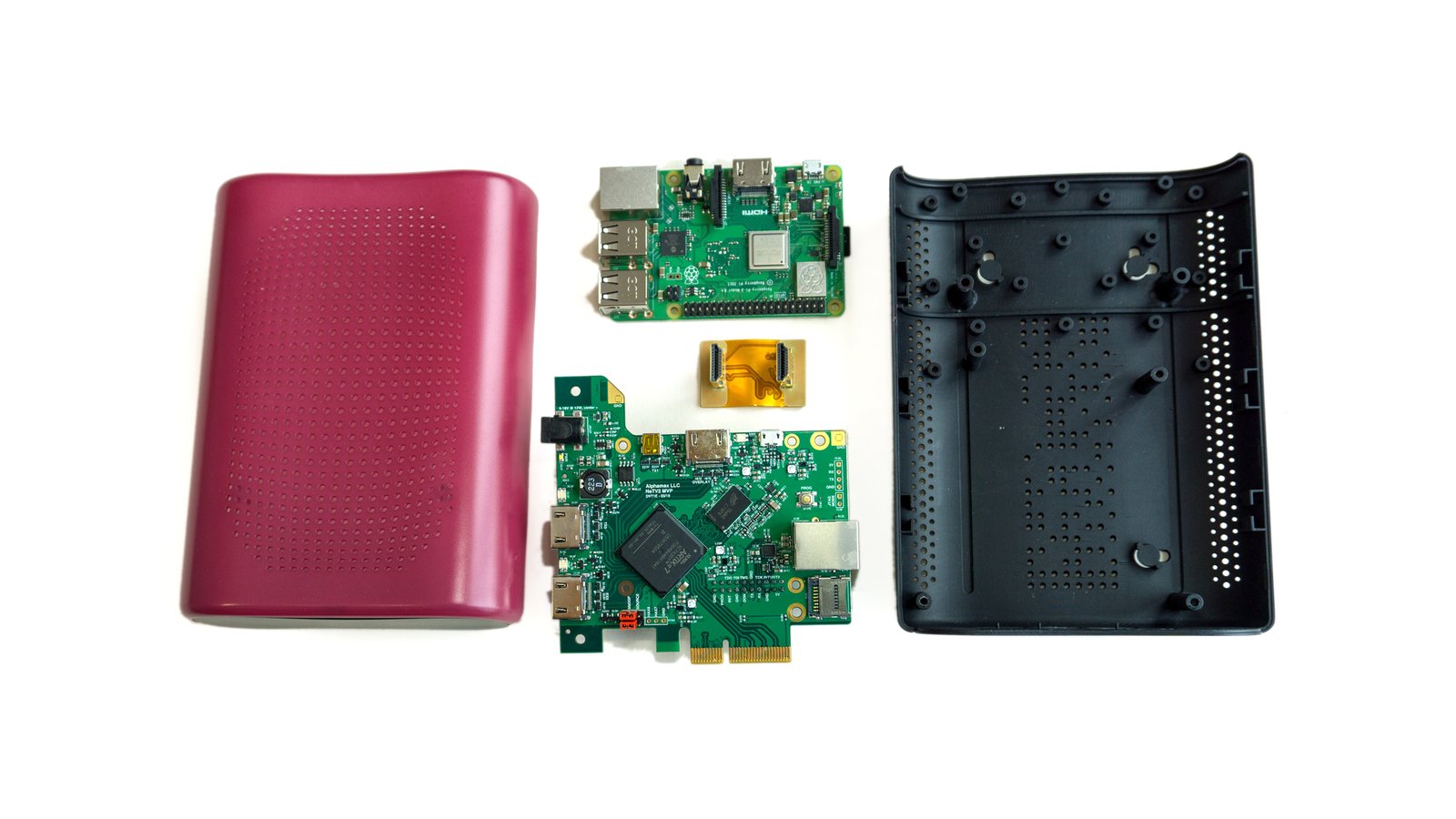
An open video development board in a PCI express form factor that supports overlaying content on encrypted video signals. Let's bring open video to the digital age!

A Linux computer that connects to the real world: ARM + FPGA + Wi-Fi + 180 I/O
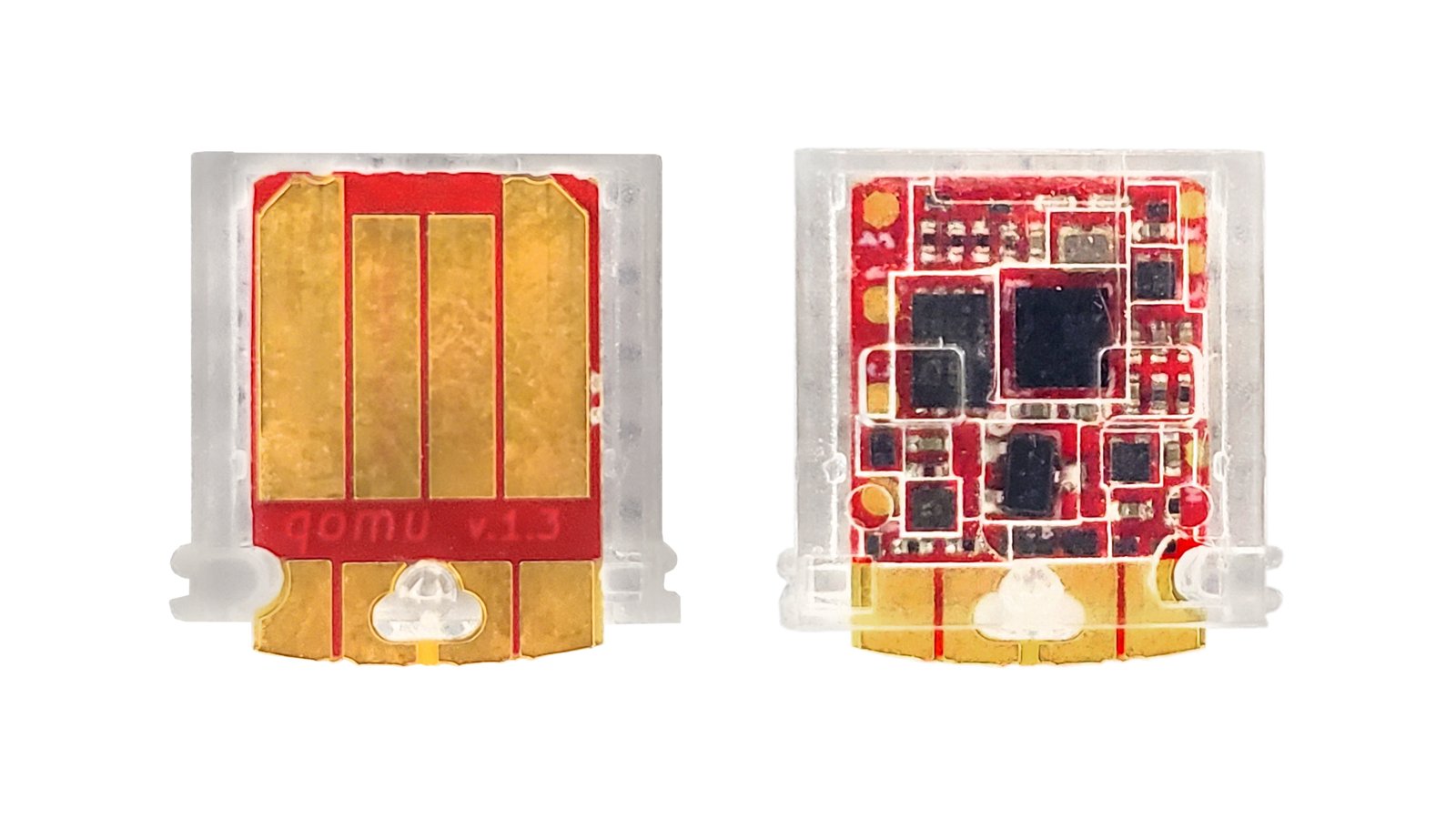
An MCU + eFPGA dev kit with 100% vendor-supported open source tools that fits inside your USB port